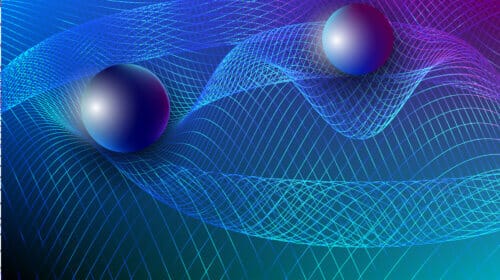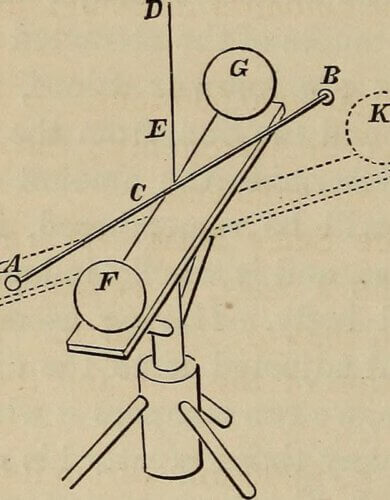A new record in the measurement of the gravitational field was broken in a study recently published in the prestigious magazine Nature. Measuring gravity on a microscopic scale, which is significantly weaker than the other forces in nature, is a huge technological and scientific challenge. However, gravitational experiments at the atomic scale are critical to understanding the quantum nature of gravity. In the future, will we be able to stretch the limits of the experiment to single micrograms?

Nature spoke of four forces - the strong force, the weak force, the electromagnetic force and the gravitational force. Of all people Paul Diark asked, why is gravity so weak? This is a question that worries many scientists even today and the answer is not in a hurry to arrive. To understand the nature of gravity, physicists study its behavior in extreme situations, but alongside the successes of space research, the real challenge remains at the microscopic scales. The reason for this of course stems from its weakness and minimal effect, but looking at the atomic scale may shed light on the quantum nature of this force.
There is no doubt that for any real need Newton's laws published in the 17th century do a wonderful job. Thanks to them we launch probes to Mars, place satellites in orbital orbit around planets and moons, protect the sky from rocket attacks and fly anywhere in the world. We could be satisfied with these successes but physicists are not engineers, they seek to understand the most basic laws of nature. At the moment they are faced with two seemingly incompatible theories - general relativity and quantum mechanics. The combination of the two requires an understanding of the quantum behavior of the gravitational field and we currently have no observations or experiments that would lead us to this discovery.
In the last decade, a large number of experiments were published that verified Einstein's theory of general relativity with surprising precision. The experiments focused on observations of Large astronomical bodies, in sensitive measurements of gravitational waves And in the famous picture of the black hole. At the same time, scientists are focusing on experiments that can be conducted on Earth that are sensitive to weak gravitational forces, for example through Verification of the equivalence principle, Measuring Newton's gravitational constant and the measurement of gravitational attraction at micrometer distances. Around the world, researchers have examined the gravitational pull on bodies of various sizes, from particle collections to macroscopic bodies, but the source of the gravitational field has always been "heavy" (at least a few kilograms). The reason for this is clear - the mass of the body is small in relation to the radius of the body to the third power, therefore almost no studies have been published that examined the force of gravity from a source of a few grams. The challenge is huge - the system needs to be insulated from seismic noise, electricity and magnets that are tens of times more powerful than gravity.

in the last week Was published In the prestigious magazine Nature a breakthrough in the measurement of the gravitational field from a 90 milligram source. In an experiment conducted by Tobias and his colleagues from Austria, the researchers placed massive balls on the ends of a freely hanging rod. The Earth's gravitational field pulls the balls down but the rod is held in that direction and is forced to move only in a circular motion. In front of one of the ends of the rod was placed another ball that served as a source of gravitational field that forces the rod to rotate. Between the masses was placed a gold screen that served as a Faraday cage so that the electromagnetic forces would not affect the experiment. During the pull, the researchers measure the degree of rotation using a laser that hits the mirror placed in the center of the rod. The experimental system is not new to science, it was first built by Henry Cavendish to measure the density of the Earth (an experiment equivalent to measuring Newton's gravitational constant), but this is the first time it has been tested in such a weak gravitational field.
From a direct calculation using Newton's laws, the force exerted between the two masses is equal to the force exerted by the Earth on a mass weighing picograms (thousandths of a billionth of a gram, one third of the average mass of a human blood cell). You will not be surprised that even in these extreme conditions the researchers showed that Newton's laws are still valid. Tobias believes that the source of gravity can be stretched to a few micrograms, and if the background noises are really swept away and a pure signal of gravity is obtained, a window will open towards quantum gravity.
More of the topic in Hayadan:

2 תגובות
Enough already, take a rest... this mouth is not a physical size but a mathematical size
…1/9 +pi x 4 =1-1/3+1/5-1/7
It's called a Taylor column and it's taught in the first year of any degree in engineering or exact sciences.
Experiments in the field of tiny phenomena are the experiments that change paradigms.
It will also become clear that free fall does not result from "a mysterious force emanating from the earth" but rather from the falling body itself.
To lift a body to a height of 1 meter, you need to invest energy.
When you let go of the body, the same amount of energy is received when it hits the ground, and the law of conservation of energy is fulfilled.
In the Newtonian explanation of gravity, the law of conservation of energy does not hold.
Another experiment in the field of tiny phenomena is the scope experiment.
This experiment also changes a paradigm.
The idea of a constant pie will disappear from the world, and in its place will come the idea of a variable pie between 3.1416 and 3.164
https://youtu.be/HY7GQxU1HLk
.